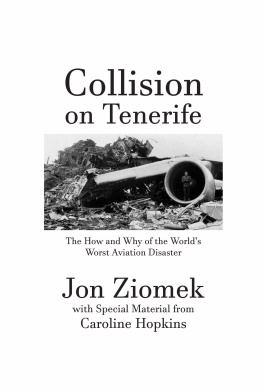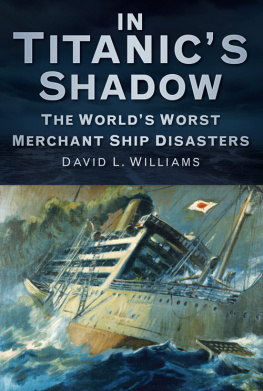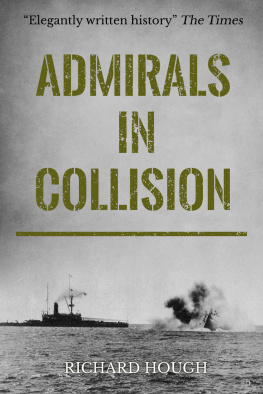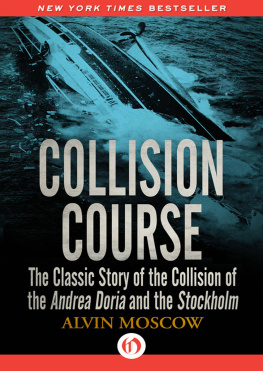Jon Ziomek - Collision on Tenerife: The How and Why of the Worlds Worst Aviation Disaster
Here you can read online Jon Ziomek - Collision on Tenerife: The How and Why of the Worlds Worst Aviation Disaster full text of the book (entire story) in english for free. Download pdf and epub, get meaning, cover and reviews about this ebook. year: 2018, publisher: Post Hill Press, genre: Detective and thriller. Description of the work, (preface) as well as reviews are available. Best literature library LitArk.com created for fans of good reading and offers a wide selection of genres:
Romance novel
Science fiction
Adventure
Detective
Science
History
Home and family
Prose
Art
Politics
Computer
Non-fiction
Religion
Business
Children
Humor
Choose a favorite category and find really read worthwhile books. Enjoy immersion in the world of imagination, feel the emotions of the characters or learn something new for yourself, make an fascinating discovery.
- Book:Collision on Tenerife: The How and Why of the Worlds Worst Aviation Disaster
- Author:
- Publisher:Post Hill Press
- Genre:
- Year:2018
- Rating:3 / 5
- Favourites:Add to favourites
- Your mark:
- 60
- 1
- 2
- 3
- 4
- 5
Collision on Tenerife: The How and Why of the Worlds Worst Aviation Disaster: summary, description and annotation
We offer to read an annotation, description, summary or preface (depends on what the author of the book "Collision on Tenerife: The How and Why of the Worlds Worst Aviation Disaster" wrote himself). If you haven't found the necessary information about the book — write in the comments, we will try to find it.
Jon Ziomek: author's other books
Who wrote Collision on Tenerife: The How and Why of the Worlds Worst Aviation Disaster? Find out the surname, the name of the author of the book and a list of all author's works by series.
Collision on Tenerife: The How and Why of the Worlds Worst Aviation Disaster — read online for free the complete book (whole text) full work
Below is the text of the book, divided by pages. System saving the place of the last page read, allows you to conveniently read the book "Collision on Tenerife: The How and Why of the Worlds Worst Aviation Disaster" online for free, without having to search again every time where you left off. Put a bookmark, and you can go to the page where you finished reading at any time.
Font size:
Interval:
Bookmark:

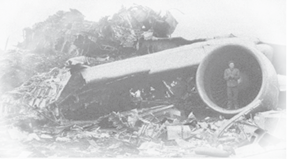
C HAPTER 5
It had started out as a routine flight. KLM Royal Dutch Airlines 4805, a chartered Boeing 747 from Amsterdams Schiphol Airport, was carrying 235 passengers to Las Palmas in the Canary Islands for a week of sunshine and fun. Once there, the plane would pick up a load of vacationers who had just concluded their holidays and return them to Amsterdam.
There and back. Strictly routine.
But it didnt happen that way because of the bomb at Las Palmas. KLMs flight crew, especially the pilot, had every right to be displeased with the way the day was going. They didnt need delays theyd taken off from Amsterdam a few minutes late, although the flight had been able to make up that time in the air.
But another delay could be a serious problem for this captain, Jacob Louis Veldhuyzen van Zanten, one of KLMs top pilots. One month past his 50th birthday, van Zanten had accumulated a significant 1,545 hours of flying time in 747s. Blond, handsome, successful, and confident, van Zanten was the man airline officials had chosen to introduce KLMs pilots to the intricacies of flying the jumbo jets. He spent hundreds of hours in the KLM 747 simulator with other pilots, explaining procedures and running them through simulated flights. Jacob van Zanten was one of the airlines stars hed even been featured in photos accompanying some of KLMs print advertisements in magazines and newspapers around the world, smiling at potential passengers.
KLM. From the people who made punctuality possible, read the headline of those advertisements. There, in the center of the two-page ad, was Captain van Zanten, his Nordic features beaming at the readers. He was in his uniform, with gold bars on his shoulders to signify his rank. Underneath were the words, The reliable airline of those surprising Dutch.
And now, as his plane circled above Las Palmas, perhaps van Zanten looked at his watch. Things werent so reliable now, as the crew waited for instructions from the airport managers.
Van Zantzens First Officer was Klass Meurs, also one month past a birthday his 42nd. Meurs lived in Heemstede, near Amsterdam. Although he was an experienced flyer, with 9,200 hours of flying time prior to this flight, Meurs had a total of only 95 hours in 747s not even two months worth. Any uncertainties he may have felt about flying in the jumbo jet were probably relieved by the confidence oozing from the man on his left.
By contrast, Second Officer and Flight Engineer Willem Schreuder, 42, of Voorburg, the Netherlands, was much more experienced with 747s. He had amassed 543 hours in them and had even put in more total flying time for KLM than Van Zanten, with 17,031 hours, compared to the captains 11,700 hours. Van Zanten was the senior officer, but the amount of time that hed spent in the simulator as an instructor in recent years had caused him to slip behind some of the younger officers in route flying.
The 747 they were flying was called The Rhine (named for the major Western European river) when it rolled off the Boeing Aircraft Co.s assembly line in the autumn of 1971. Before leaving Schiphol Airport at 10:20 a.m. that morning, the planes airframe had made 5,200 takeoffs and, of course, the same number of landings in the five and a half years since it had been built. It had a total of 21,195 hours in the air.
For this flight, the entire plane had been chartered by Holland International tour lines.
Shortly after 1 p.m., the instructions came from Gando Airports control tower: all incoming planes were being diverted to Tenerifes Los Rodeos Airport, approximately 20 minutes flying time to the west. The diverted flights would have to wait there until Las Palmas officials could reopen Gando Airport.
Perhaps the mood changed just about then, as the instructions were transformed into action in the KLM cockpit. The crew reset their navigation system a computer that helps fly the plane to specific targeted radio beacons and then pulled the plane out of its holding pattern to swing west and head for Tenerife. There was no doubt about it now they and everyone else would be running very late. The casual chatter between crew members may have slackened, the humor coming less easily. And van Zanten had another pressure on him: as chief pilot for KLM, he was intensely aware of a KLM work rule it was even a Dutch law forbidding any overtime for flight crew members. The rule was a safety measure, to ensure that overly tired personnel werent handling the controls of jets with hundreds of vulnerable passengers on board.
If their stopover at Tenerife wasnt too long, thered be no problem, van Zanten knew. More than a couple of hours, though, and theyd be cutting it close. He banked the plane and picked up the aircrafts public address microphone to explain to the passengers what was happening, while Meurs began looking for the Los Rodeos charts in the pilots airport and runway chart book.
* * * *
In a holding pattern several thousand feet above the KLM flight, another Boeing 747 was circling Pan Am 1736. It was an older plane than KLM 4805, having been brought out of the Boeing hangar in early 1970, the very first year of 747 deliveries. Since then, the airframe had logged 25,725 hours in the air and made 7,195 takeoffs. Coincidentally, the name of the jet the Clipper Victor was the same as the first name of its pilot, Victor Grubbs, of Centerport, New York.
Grubbs, 56, was an experienced pilot who had put in 21,143 hours in the air during his Pan Am career, 564 of them in 747s. He was in good spirits on this flight. Hed just passed his latest mandatory medical checkup the previous Wednesday.
Sitting to Grubbss right was Robert Bragg, the first officer. Bragg, 39, of Howard Beach, New York, was a regular in 747 cockpits he had a whopping 2,796 hours in them, out of his total flying experience of 10,800 hours.
Second Officer George Warns of Blairstown, New Jersey, was 47 years old and also experienced in 747 operations. He had 559 hours of time in the air with the jumbo jets out of his total of 15,210 flying hours with Pan Am.
After the six-and-a-half-hour flight from New York, the Pan Am crew members were not exactly thrilled when the Gando Airport controllers radioed the delay and diversion. Cant we stay in a holding pattern until the airport reopens? Grubbs had asked the tower, but received a no because no one knew how long the delay would be. It was explained to Clipper 1736s crew that a bomb had gone off in the terminal building. But after some consultation among themselves, the crew members decided to tell the passengers as few details as possible perhaps thinking, with some justification, that a full account of the news would be too upsetting.
So Captain Grubbs broke into the conversations and the card games going on in the cabin to announce that a plane was stalled on the runway at Las Palmas, causing a diversion to Tenerife. But he also called the cruise director for Royal Cruise Lines, Beau Moss, into the cockpit to tell him that the tower had said something about a bomb in the terminal building. Moss thanked him for the information, left the cockpit, and returned to his seat but on the way, he stopped to tell Jim Naik, the cruise lines vice president. Naik, in turn, got up and strolled over to the seats of Warren and Caroline Hopkins, both of whom were reading just then. He told them the real reason for the delay. They expressed appropriate surprise. I hope this isnt going to cause any problems with the cruise, Jim, Warren Hopkins said. Oh, I dont think so, Naik answered reassuringly. Theyll get it straightened out soon.
Font size:
Interval:
Bookmark:
Similar books «Collision on Tenerife: The How and Why of the Worlds Worst Aviation Disaster»
Look at similar books to Collision on Tenerife: The How and Why of the Worlds Worst Aviation Disaster. We have selected literature similar in name and meaning in the hope of providing readers with more options to find new, interesting, not yet read works.
Discussion, reviews of the book Collision on Tenerife: The How and Why of the Worlds Worst Aviation Disaster and just readers' own opinions. Leave your comments, write what you think about the work, its meaning or the main characters. Specify what exactly you liked and what you didn't like, and why you think so.

